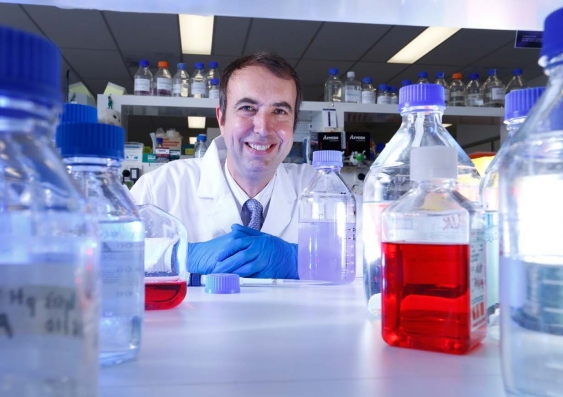An international research team that includes UNSW scientists has discovered an important new genetic target for the development of possible treatments for the common inherited blood diseases sickle cell anaemia and thalassaemia.
The researchers have identified a gene which switches off the body’s natural production of foetal haemoglobin soon after people are born.
Our discovery of this second, and only other significant gene that can switch of foetal haemoglobin production, is a great example of how science progresses – through the setting of goals, scientific persistence, development of new technologies, and through both competition and collaboration.
“Deactivating this gene so that foetal haemoglobin production is switched back on in adults could provide much-needed cures for sickle cell anaemia and thalassaemia, which are painful and potentially fatal life-long disorders,” says team member UNSW Dean of Science Professor Merlin Crossley.
“Scientists around the world, including my UNSW team, have been searching for genes like this for a long time.
“The first one was found eight years ago. Our discovery of this second, and only other significant gene that can switch of foetal haemoglobin production, is a great example of how science progresses – through the setting of goals, scientific persistence, development of new technologies, and through both competition and collaboration between different research teams.”
The study, led by Dr Takahiro Maeda of Harvard Medical School, is published today in the journal Science.
Sickle cell anaemia, thalassaemia and other inherited blood disorders in which people produce defective adult haemoglobin – the vital molecule that transports oxygen around the body – are the most common single-gene genetic disorders known.
“A small number of people with these diseases of adult haemoglobin also have a beneficial mutation which means they keep on producing foetal haemoglobin all their lives, and this significantly reduces their symptoms,” says Professor Crossley, of the UNSW School of Biotechnology and Biomolecular Sciences.
“For more than 40 years researchers have been competing furiously to find out how foetal haemoglobin production is turned off naturally, so we can try and turn it back on again as a treatment for these blood disorders.”
In 2008, a team led by Dr Stuart Orkin of the Harvard Medical School showed that a gene known as BCL11A could switch foetal haemoglobin production off.
“It soon became clear it wasn’t the only major repressor gene, so my team changed tack from where we had been searching and eventually identified this second gene, called ZBTB7A, as a likely candidate,” says Professor Crossley.
“We then joined forces with Dr Orkin and Dr Maeda and other collaborators who carried out the highly sophisticated mice studies and human cell experiments necessary to categorically demonstrate this second gene’s vital role in suppressing production of foetal haemoglobin.
“It is very satisfying to know that we can stop searching now and focus on finding ways to deactivate these two major genes.”
Approaches being explored by different teams include developing drugs that interfere with the action of the genes, or carrying out genetic modifications so they do not function properly.
At present, BCL11A is considered to be a better target for developing a new therapy than ZBTB7A.
The international team includes researchers from Harvard Medical School, Oxford University, RIKEN BioResource Centre, University of Tsukuba, University of Texas Southwestern Medical Centre, and the Howard Hughes Medical Institute.
The UNSW Science team includes Professor Crossley, Dr Alister Funnell, Gabriella Martyn, and Dr Laura Norton.


